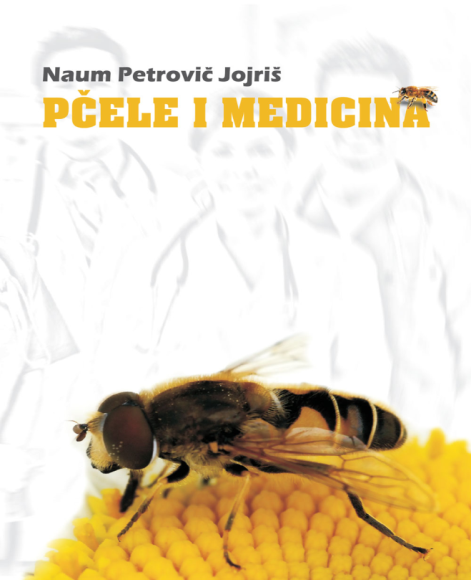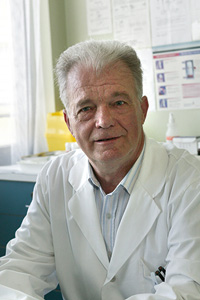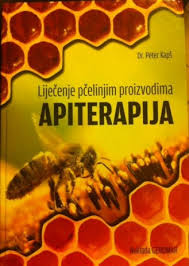APITHERAPY THROUGH HISTORY AND TODAY
Bees and their products have been present in the daily life of man since the oldest records Graphic representations of beekeeping and the application of bee products in nutrition or the prevention and treatment of certain diseases date back to 15,000 years ago in cave drawings in different parts of the world.

An 8,000-year-old drawing found in caves near Valencia, Spain
Historical records with information about the life of the Sumerians, in the Bible, in the Koran, it is mentioned that people used honey from wild bees and then began to cultivate them and used honey and other products of honey bees in their daily diet or as medicine. 4. My 13,28. And telling them, they said: let’s go to the land to which you sent us; indeed milk and honey flow in her, and here is her crop. 5. My 32, 13. They led him to the heights of the earth to eat the crops of the field, and let him suck honey from the rock and oil from the hard rock, Stories 24, 13. My son, eat honey, for it is good, and honey, for it is sweet to your throat. Matthew 3, 4. And John had a dress made of camel’s hair and a belt of leather around him; and his food was locusts and wild

Honey was used throughout the ancient Near East for sweetening, food, medicine, alcoholic beverages (mead), mummification, and as a metaphor for goodness, abundance, and love. But we know surprisingly little about how bees were first domesticated and the origins of beekeeping. This lecture explores what we can learn about ancient Near Eastern bees and honey from ethnography, archaeology, texts, and art ¬in a journey that takes us from Egypt to the realm of King Midas in Anatolia, and ends in Canaan – the Land of Milk and Honey. Honey was used throughout the ancient Near East for sweetening, as food, medicine, for making alcoholic beverages (mead), mummification, and as a metaphor for goodness, abundance, and love. But it’s surprising how little we know about how bees were first domesticated and about the origins of beekeeping in general. This lecture explores what we can learn about ancient Near Eastern bees and honey from ethnography, archaeology, texts and art on a journey that takes us from Egypt to the kingdom of King Midas in Anatolia, ending in Canaan (Hanaan) – a land flowing with milk and honey.

The oldest known archaeological record of beekeeping dates back to the biblical accounts of King David and his son King Solomon. The inscription shown in the picture was discovered in Tel Rehova, Israel. It is estimated to be over 3,000 years old.
Ancient civilizations
Egypt
4,500 years ago, the Egyptians began to domesticate bees. The bee was the trademark of Lower Egypt. The Egyptians used honey, propolis, wax, pollen – as food, for making cosmetics, healing, embalming mummies (honey and wax). In the tomb of Pharaoh Tutankhamun, containers with still edible honey (according to some authors) over 3000 years old were found. The Egyptians covered the dead with propolis to prevent the body from decaying. The first known recipe for the use of honey was written on a clay tablet found in the Euphrates Valley – 2100-2000. BC
China
Bees are mentioned in the oldest written documents in China. Beekeeping began as early as 221 BC. Until 25 AD, bee-keeping was the privilege of successive dynasties. From 25 to 220 AD, “ordinary people” began to keep bees. The first professional beekeeper was Jiang-qi (158-167 AD). Between 1616 and 1911, the first books on beekeeping and collecting honey bee products were published. In China, bees symbolize ambition and the success that comes after hard work. Bee colonies are a symbol of imperial courts. The bee sting is a symbol for the discipline required to maintain order. In Chinese, bees are generally called feng (fēng), while honey bees are called mifeng (mì fēng). In ancient times, honey was used to store perishable fruits during transport because its composition allowed for long-term preservation. In 2016, China was the world’s largest exporter of honey.
Old Greece
Hippocrates (460-377 BC), the father of medicine, states that honey acts as an antibiotic, antiseptic, and expectorant. He used propolis to treat ulcers and internal and external wounds. “I eat honey and use it in the treatment of many diseases, because honey is good as food and brings good health” “Honey cleans wounds and ulcers on the mouth and heals boils”
Aristotle (384-322) BC “Eating honey prolongs life” He attributes healing properties to all bee products.
Galen (130-210) used honey as a medicine
Athletes used honey as a mandatory dietary supplement in order to have the strength to endure training and not to get sick.
During the wars, the Greeks and Romans used honey as a means of strengthening and healing the body, as well as for faster healing of wounds.
Alexander the Great was embalmed with a mixture of honey and beeswax.
Aristion, one of the most mysterious figures of ancient Greece, is believed to have given mankind music and the art of beekeeping.
Ancient Rome
They used the knowledge of the ancient Egyptians and Greeks.
Recipes for making sugar syrup to feed bees were found in old writings
Comella describes the necessary tools for beekeeping such as combs, and hives that closely resemble those of today
Avicenna – Ibn-Sīnā 18 June c. 980 – 16 August 1037.
In his works, he says about the healing properties of honey: “it invigorates the soul, aids digestion, sharpens the mind, restores memory.” He used honey to treat wounds.

Pliny Veronensis, born in Verona, writer and chronicler of his time. He wrote the 37-volume encyclopedia Naturalis Historie. He wrote about bees, honey, wax, pollen, propolis, bee venom. His catchphrase “Ubi apis ibi salus” is known – Where there are bees, there is health.

Medieval Europe
Bees were raised in baskets. They used large amounts of wax for candles. Fermented honey-based beverage were popular. Elizabeth I loved Hydromel – fermented honey and water – known as mead.

Book about honey as a medicinal substance from 1480
Contemporary apitherapists

Filip Terč
Dr. Filip Terč
(1844 -1917), a doctor and beekeeper from Maribor (Slovenia) who successfully cured 543 out of his 658 of patients suffering from rheumatic diseases, is considered the father of the modern apitherapy.
Dr. Filip Terč was born in 1844 in Praporište (Czech Republic). He studied medicine in Vienna (Austria) and worked in Vienna General Hospital as a surgical assistant. Since 1876, Dr. Terč and his family lived in Maribor, where he worked as a doctor and a teacher. He died in Maribor in 1917.
Beside medicine, Dr. Filip Terč had a big passion for bees. Working as a beekeeper encouraged him to study the beneficial effects of bee poison on patients suffering from rheumatic diseases. He published his findings in a magazine in Vienna in 1888. After this notification, Central Europe became interested in Apitherapy. The works of Dr. Filip Terč show that by his experiments and clinical observations he opened the way for the subsequent science of Apitherapy, Allergy and Immunology.
His birthday, 30 March, has been celebrated as World Apitherapy Day.

Bodog F. Beck
(Budapest, Hungary, 1871 – New York City, January 1, 1942), Hungarian physician, follower of Philip Terch, brought apitherapy to the USA . In his private practice in New York at 116 East 58th Street, he applied apitoxin therapy (treatment with direct bee stings) in the treatment of rheumatoid arthritis. Dr. Beck tried to get the bee venom treatment method recognized by the medical profession, but without success.

Charles Mraz
Charles Mraz
(July 26th, 1905 – September 13th, 1999)
Doctor, beekeeper, apitherapist from Vremont Founder of the American Apitherapy Society

Naum Petrovich Jojris
In the 50s of the last century, the Russian doctor Naum Petrovich Yojrish coined the term “medical beekeeping” in his book “Bee products in medicine”. Doctors and biologists reacted by considering it exaggerated. However, the Scientific Council of the Ministry of Health approved this term with the explanation that this part of science is interesting and promising for humanity.
N. P. Jojriš, Pčele krilati farmaceuti, Poslovno udruženje za pčelarstvo Jugoslavije, Beograd, 1968.

Dr. Stoimir Mladenov, doctor from Bulgaria.
Dr. Stoimir Mladenov, Eng. M.Radosavovič. Treatment with bee products – Apitherapy and basics of beekeeping. in 1999.
Dr. Stoimir Mladenov “Bee products – food and medicine”, Medicine, Sofia, 1978, p. 192.

Dr. Peter Kapš – Treatment with bee products – apitherapy, monograph 2012.
Dr. Peter Kapš
1938. Slovenian physician, internist pulmonologist. Regular member of the Bee Society in Novo Mesto

mr.sc. Žarko Stepanović
Leading apitherapist in Serbia. Author of several books on apitherapy, which contains numerous scientific proof and , practically applicable advices of the use of bee products in prevention and treatment. Independent creator of a large number of registered preparations, a mixture of bee products, for prevention and treatment. One of the few apitherapists who applies apitoxin therapy in the treatment of chronic diseases, always in the presence of a medical doctor. An exceptional pedagogue and lecturer in the field of apitherapy. Founder and long-time President of the Association of Apitherapists ApiBeo.

dr. sc. Gordana Hegić
President of the Croatian Apitherapy Society,
PhD of biotechnical sciences.
Graduated from the Department of Beekeeping at the Faculty of Agriculture in Zagreb.
Permanent member of the commission for evaluating honey in Croatia,
Owner of 4 patents,
Author of the “modern manual” (says the profession in Croatia and the Region) in the field of beekeeping, apitherapy and apiturism.
Particularly active in the promotion of apitherapy in veterinary medicine, Author of the children’s picture book “Bees”
Beekeeping and apitherapy in Serbia
In Priscus Rhetor’s report on the letter of the Byzantine Emperor Theodosius (408-450) to the Hun ruler Attila, it is stated that the soldiers in the war were given a spoon instead of food, and honey instead of wine. Medos (honey with the Greek suffix os) is mead, a favorite drink of the ancient Slavs. The use of medos (mead) in the Pannonian Lowlands, where the Huns ruled at the time, shows that the Slavs, settled around the Danube and Tisza rivers, were the main producers of mead, because the word med is neither Greek nor Hunnic, but Slavic.
After the final settlement of the South Slavs in the Balkans, beekeeping gained even greater economic and cultural importance. Honey and wax were produced not only for the population and the army, but also for trade.
Certain written monuments of Serbian rulers have been preserved that confirm this. Thus, in the letter of Stefan Prvovenčani, which regulated trade with the people of Dubrovnik, this is also stated among the rest:
„Let it be known to everyone that the kingdom gave me grace to the people of Dubrovnik to sell wine without water and honey according to the price list, and if anyone is found selling wine with water or honey over the price list, let them take everything they have“.
King Uroš, giving the people of Dubrovnik privileges to trade in Serbian lands, orders:
„That neither skarl, nor honey, nor flour, nor any other goods be taken from them by force“.
During the reign of King Milutin, beekeepers were freed from all other duties, including military duties. Therefore, from the fact that honey was a valued trade item in the Middle Ages, it can be concluded that the conditions for beekeeping were good then and that the beekeepers were masters of their work. Beekeeping was valued then because honey was used as a substitute for sugar, which was an expensive food.
With the collapse of the Serbian states, the large apiaries in the monasteries and on the estates of the Serbian rulers also collapsed. However, despite all the wars and other social misfortunes, the Serbian peasant continued to keep bees until today. https://sr.wikipedia.org/
Bee keeper Jovan Živanović (1841-1916) after graduating from the Serbian high school in Karlovac, studied Slavic studies in Vienna and even then became a great supporter of Vuk Karadžić and Đura Daničić.
Together with the rector of Karlovac Seminary, Ilarion Ruvarac, he founded the Department of Beekeeping in 1878, where he worked as a professor for two and a half decades. He was called “the father of rational beekeeping”.
From the world’s most famous beekeepers of that time, Jovan Živanović received advice on how to construct a beehive from which honey will be obtained without suffocating the bees. This is how the revolutionary hive “Americana” was born.
Zivanović’s hive “Americana” had 16 frames, dimensions 26 x 27 centimeters and Hahnemann’s grid. It opened from the top, the work around it was simple and without any destruction of bees, and the beekeepers quickly accepted it.
In the Museum of Beekeeping (Živanović), there are still examples of the first “Americana” hives. In the life of all beekeepers, in Serbia and around the world, that type of hive is still extremely important.
The second half of the 19th century brought significant professional interest in beekeeping in Serbia, and the first recorded data on an organized association dates back to 1869. Because of the great interest in beekeeping, the first beekeeping council was organized in 1897, and the first official magazine was launched in 1898. Before World War II, the SFBA had almost 4,000 members.
References
- Gil Stein. Sweet Honey in the Rocks: Honey, Bees, and Beekeeping in the Ancient Near East
https://www.youtube.com/watch?v=PXQViI-Lo5w - https://www.slideshare.net/AllahDadKhan/history-of-honey-in-world-a-research-report-by-mr-allah-dad-khan
- The Ancient Honey Bee
https://thequeensbeesproject.wordpress.com/2012/03/27/ancient-honey-bee/ - Constantine Wing Heng Lau. Ancient Chinese Apiculture. Bee World 89(4) December 2012. Tsung Tsin Christian Academy DOI:10.1080/0005772X.2012.11417496
An overview about apitherapy and its clinical applications
Phytomedicine Plus 2 (2022) 100239
Wilson Antonio Weis, Nicolas Ripari, Fernanda Lopes Conte, Mariana da Silva Honorio, Arthur Alves Sartori, Ramon Hage Matucci, Jos´e Maurício Sforcin
a S˜ao Paulo State University (UNESP), Institute of Biosciences, Department of Chemical and Biological Sciences, Campus Botucatu, 18618-691, Brazil
This review aimed to discuss scientific research based on studies carried out in vitro using different cell cultures, and in vivo studying mice, rats or other experimental animals. Clinical trials using bee products are also documented, although the mechanisms of action involved in their activity are not always reported. In an attempt to bridge the gap between beekeepers, apitherapists and the scientific evidence of research on bee products, we aimed at analyzing the practice of apitherapy globally and combine traditional knowledge with the scientific evidence.
The inclusion criteria for selecting the manuscripts were: only manuscripts dealing with the biological activity of each product were included.
The number of manuscripts published until 2020

Conclusion
„Together, data showed the benefits of bee products and the clinical trials demonstrated their efficient action in the treatment of various diseases, both internally and externally; however, few authors explained the mechanisms of action involved in their clinical trials, and explanations can be found mainly about propolis, bee venom, honey and royal jelly.
Although we have advanced a lot about the knowledge of bee products, we still need to expand and disseminate this knowledge for humanity’s benefit, easier nowadays in the digital era. Thus, in order to exploit bee products potential and standardize their use, we highlight the importance of communicating the results in scientific and alternative events to reinforce the exchange of information between beekeepers, researchers, apitherapists, nutritionists, physicians, sellers and consumers of bee products. If not, we will always be working separately, without complementing our expertise.“
